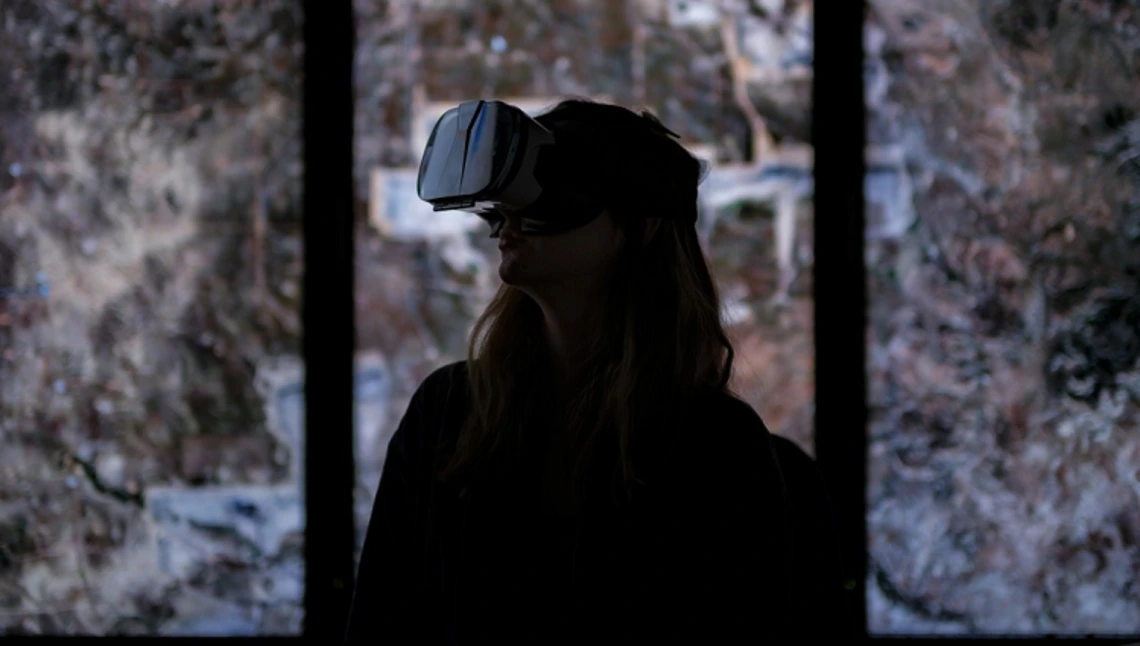School of Mining & Mineral Resources Works with Trio of Technology

Faculty, staff, researchers, and students at the University of Arizona School of Mining & Mineral Resources are at the center of a trio of technology – drones, autonomous vehicles and digital twins – set to transform efficiency, safety, and sustainability in the mining industry on a global scale.
Drones are routinely equipped with sensors to accomplish various tasks. Electro-optical devices can map and continually provide updates on mine operations; Light Detection and Ranging (LiDAR) sensors collect volumetric calculations of ore stockpiles and waste and also evaluate, map and survey open-pit and pre-mining locations; and thermal infrared cameras detect temperature differences to aid in mineral extraction and assist with maintenance of electrical and mechanical systems. Additionally, geophysical instrumentation such as gravity, magnetics, electro-magnetics, radiometrics, and hyperspectral sensors can be flown on drones and assist with data collection and exploration of minerals surrounding mines. These instruments are also used in geometallurgy and characterization and safety of tailings.
“That is another beauty of drones: The sensors they carry allow for collection of a higher density of information than you would receive from aircraft, satellites, or ground crews. Drones have a super ability to collect a lot of data in a much more cost-effective manner to provide information and knowledge for timely decisions,” said Dean Riley, a research scientist and director of the Hyperspectral Research Consortium.
Like their aerial counterparts, autonomous vehicles – haul trucks, loaders, drills, scoops and other equipment used in exploration and excavation – offer numerous benefits for the mining industry. Rapidly expanding autonomous and semi-autonomous mining technology can help reduce emissions, improve safety and increase productivity.
“With autonomous vehicles, one of the things we emphasize is that people’s jobs won’t disappear: Their roles will just change. They will move away from driving heavy equipment and performing repetitive tasks in hazardous situations to monitoring vehicles and other higher-level tasks. The workforce will be more digitally enabled,” said Nathalie Risso. As director of the UA Mine Automation and Autonomous Systems Lab, Risso works closely with colleagues and students campus-wide on digital innovation and research.
Digital twins offer another form of emerging technology with exciting potential.
“The world is changing. Digital Twins are part of Industry 4.0 technologies like artificial intelligence that are creating lots of buzz. We want our students to be exposed to that from the ground up and want them to be able to integrate it well into the mining domain,” said MGE associate professor Angelina Anani.
Digital twins provide a virtual representation of the physical world through computers or virtual reality goggles and can serve as a tool to train employees in data collection, equipment operation, remote work, and safety protocols. Digital twins are also an effective communication tool between management and stakeholders. The virtual replications are typically generated from a 3D model built from real-world scans. They display and constantly update data from sensors to reflect progressions and changes in the virtual world with the goal of identifying and mitigating potential risks and optimizing procedures in real life.
